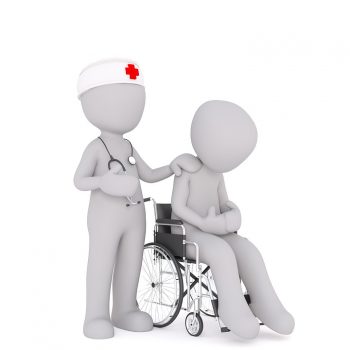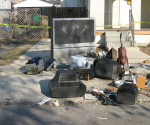Top First Aid Tips for the injuries that happen at home
Injuries occur often at home and it’s a good idea to be well prepared for when they do happen. Being prepared enables you to act promptly and efficiently to treat the issue which leads to better healing and minimising the risk of the injury worsening. Here we will share the most common injuries that happen at home and how to effectively treat them.
Cut or Scrape
This is one of the more common injuries people sustain at home. The first thing you should do is try and stop the bleeding. Using a sterile gauze, pad or cloth press firmly on the injury until the bleeding has subsided. Once the bleeding has stopped, clean the area with water and dry completely. Using a topical antiseptic cream or solution, apply a thin layer to the injury. Cover with a band-aid or gauze and medical tape. Reapply the antiseptic solution and replace the Band-Aid daily until the injury heals. If you cannot contain the bleeding after trying for more than 15 minutes or if the wound isn’t healing and is showing signs of infection, seek medical advice.

Burns
If you or someone has been burnt it is important that the burn site is ran under cold running water for at least 10 minutes. If the burn is on the hand remove rings immediately in case the fingers swell. Once the pain has subsided apply a layer of antiseptic cream or solution to the burn and cover loosely with a bandage or gauze. Continue applying antiseptic solution and recovering the area as the burn is healing. Don’t not pop blisters if any and watch for signs of infection, such as inflammation, redness, and discharge. Deep or extensive burns need to be seen immediately by a medical professional. Call 000 or head to your nearest emergency room.
Insect stings or bites
If there is a stinger embedded in the skin, you will need to remove it. You can do this by gently scraping the skin to dislodge it. Its important that you don’t use tweezers to remove it as this can cause it to break and by squeezing it you may inject more venom into the skin. If the victim is experiencing any anaphylactic symptoms such as face swelling, breathing difficulties or coughing, call 000 for assistance. For itching associated with the bite site, apply an antihistamine cream or a 1% hydrocortisone cream.
Splinter
Clean the area using soap and water. Sterilise a pair of tweezers. If the splinter is protruding from the skin, firmly grab it with the tweezers and slowly remove. If the splinter isn’t out the skin, gently scrape the area to reveal the splinter and grab it with the tweezers. Apply antiseptic solution once removed and cover. If the splinter is far too deep to attempt to remove or it won’t stop bleeding, seek medical care.
Sunburn
Its important to stay hydrated if you or someone is sunburnt. Take ibuprofen and apply cold compresses and aloe vera lotion to the area to relieve discomfort. If you feel nauseous, dizzy, are experiencing a fever or are covered significantly in blisters head to the emergency room.

photo/pixabay
Nosebleed
In most cases, nosebleeds look worse than they are and aren’t a cause for concern. Lean forward and pinch the lower end of the nostrils. Hold consistent pressure on the nostrils for at least 5 minutes without releasing at any point. If the nosebleed is caused by impact to the face, place an ice pack on the bridge of the nose to reduce swelling. If the bleeding hasn’t stopped after 10 minutes seek medical attention.
Strains and sprains
Sprains and strains should be treated using the R.I.C.E method this stands for:
REST – After an injury it is important to rest the affected area and minimise weight bearing activities as much as possible for at least 24-48 hours.
ICE – To reduce swelling and pain, ice the area every 4 hours for around 15 minutes.
COMPRESS – The injured area should be wrapped firmly but not too tight as it can restrict circulation.
ELEVATE – Elevate the injury above heart level to reduce swelling.
If the pain is severe, seek medical advice.
Breaks
Broken bones come in many forms, from hairline fractures to clean breaks and are usually the result of high impact trauma. The area should be immobilised, and ice should be applied. Seek medical assistance as soon as possible.
It is essential to have a well-equipped first aid kit at home so you can be prepared when injuries happen. Here are the essentials you should have:
- Instant ice packs
- Disposable gloves
- Antiseptic ointment or solution
- Band-Aids
- Bandages both elastic and non-elastic in various sizes and shapes
- Tweezers
- Medical grade scissors
- Alcohol wipes
- Saline sachets
- CPR shield
- Hand sanitiser
- Gauze
- Dressing pads in varied sizes
- Stop itch cream
- Emergency (thermal) blanket
- Sterile eye pad
- Notepad and pen
- Safety pins
- First aid booklet
- Small disposable rubbish bags
- Alcohol wipes
- Hypoallergenic medical tape
Whilst having a first aid kit is great to treat minor injuries, it’s no good to you or your family if you have no idea how to apply it correctly. It pays to do a first aid course.
The First Aid Shop has an extensive selection of first aid supplies that are suitable for an array of settings. We have everything you need to make up your own customised first aid kit or you can purchase one of our ready to go kits.
Author: Justin
Super trendy health gadgets: Nano Hearing Aids, Tyto Care and more














